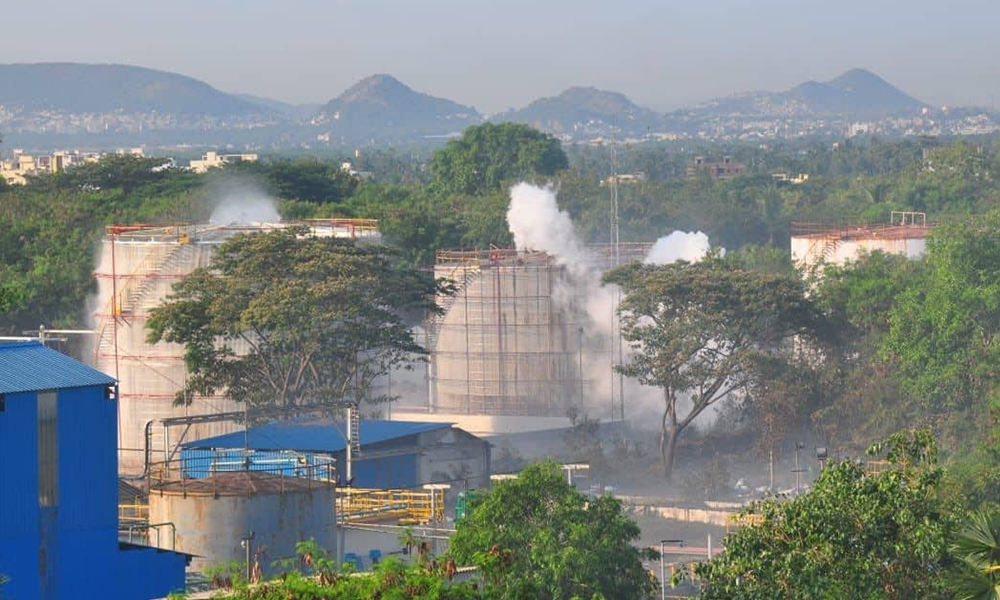
Vizag Gas Leak: Poor Safety Protocols, Breakdown Of Emergency Response Root Causes For Accident
Writer: Devyani Madaik
A media enthusiast, Devyani believes in learning on the job and there is nothing off limits when it comes to work. Writing is her passion and she is always ready for a debate as well.
Andhra Pradesh, 8 July 2020 4:44 AM GMT
Editor : Prateek Gautam |
A free soul who believes that journalism, apart from politics, should stand for social cause and the environment.
Creatives : Abhishek M
" An engineer by profession, Abhishek is the creative producer of the team, graphic designing is his passion and travelling his get away. In more ways than one, he makes the content visually appealing."
The High Powered Committee (HPC) constituted by the Andhra Pradesh government on Monday said that poor safety protocol, poor safety awareness and inadequate risk assessment response aggravated the situation at Visakhapatnam unit of LG Polymers.
Assessing the source of May 7 toxic styrene vapour leak in the LG Polymers unit at Visakhapatnam, the High Powered Committee (HPC) constituted by the Andhra Pradesh government on Monday said that poor safety protocols and total breakdown of the emergency response of procedures were the root cause of the leak.
The probe was run by the LG Polymers. Reviewing the chemical company, the HPC said that mismanagement between the workers, poor safety protocol, poor safety awareness and inadequate risk assessment response aggravated the situation, The Indian Express reported.
The HPC, headed by Environment and Forests special chief secretary Neerabh Kumar Prasad, submitted a 4,000-page report to chief minister Y.S. Jaganmohan Reddy on Monday. Salient points of the report were explained during a press conference held on July 6.
The leak that claimed almost 12 lives and left hundreds sick occurred due to uncontrolled release of styrene vapour from the M6 tank at the LG plant, which qualifies as a major accident under the Manufacture, Storage and Import of Hazardous Chemicals Rules, 1989.
"Poor design of the tank, inadequate refrigeration and faulty cooling system, absence of circulation and mixing system, poor process safety management system and total breakdown of the emergency response procedures were the root causes of the accident," the HPC pointed out in its report.
The committee also noticed that the factory failed to handle the situation as the staff lacked sufficient knowledge and experience.
The unit did not have enough stock of terminators and zero inhibitors, both of which could have been used to minimize the impact of the accident.
This led to a substantial rise in the tank's temperature, which caused the styrene liquid to eventually vaporize and increase the pressure, the committee noted. Alarm system was not used that could have alerted people around the vicinity.
"The company management had ignored the rise in polymer content from 4th April 2020 and then the sharp rise on 25th April 2020/28th April 2020," it said.
In response, the company released a statement that stated that they will fully respond to the probe result and take adequate measures.
It is to be noted that the Vishakhapatnam unit was running without any environmental clearance for its petrochemical plant for a long period of its operations between 1997 and 2019.
According to an affidavit submitted to the State Level Environment Impact Assessment Authority (SEIAA), the company accepted that as of May 10, 2019, the unit did not have a 'valid environmental clearance substantiating the produced quantity, issued by the competent authority for continuing operations'.
The committee constituted Director of the Indian Institute of Petroleum (Dehradun) Anjan Ray, Director General of DGFASLI R K Elangovan, Regional Director of Central Pollution Control Board (Pune) Bharat Kumar Sharma, AP Special Chief Secretary (Industries) Karikal Valaven, AP Pollution Control Board member-secretary Vivek Yadav.
 All section
All section














